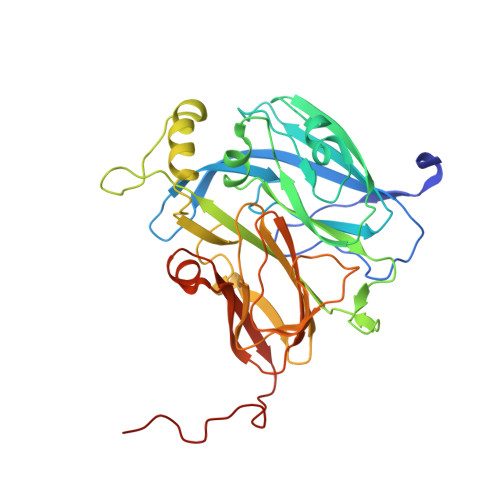Monitoring and Validating Active Site Redox States in Protein Crystals.
Antonyuk, S.V., Hough, M.A.(2011) Biochim Biophys Acta 1814: 778
- PubMed: 21215826
- DOI: https://doi.org/10.1016/j.bbapap.2010.12.017
- Primary Citation of Related Structures:
2Y1A, 2Y3Q - PubMed Abstract:
High resolution protein crystallography using synchrotron radiation is one of the most powerful tools in modern biology. Improvements in resolution have arisen from the use of X-ray beamlines with higher brightness and flux and the development of advanced detectors. However, it is increasingly recognised that the benefits brought by these advances have an associated cost, namely deleterious effects of X-ray radiation on the sample (radiation damage). In particular, X-ray induced reduction and damage to redox centres has been shown to occur much more rapidly than other radiation damage effects, such as loss of resolution or damage to disulphide bridges. Selection of an appropriate combination of in-situ single crystal spectroscopies during crystallographic experiments, such as UV-visible absorption and X-ray absorption spectroscopy (XAFS), allows for effective monitoring of redox states in protein crystals in parallel with structure determination. Such approaches are also essential in cases where catalytic intermediate species are generated by exposure to the X-ray beam. In this article, we provide a number of examples in which multiple single crystal spectroscopies have been key to understanding the redox status of Fe and Cu centres in crystal structures. This article is part of a Special Issue entitled: Protein Structure and Function in the Crystalline State.
Organizational Affiliation:
Faculty of Health and Life Sciences, University of Liverpool, Crown Street, Liverpool L69 7ZB, UK.


















